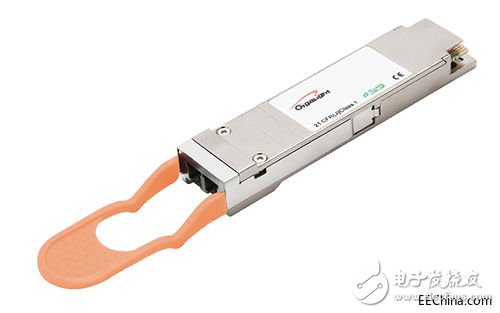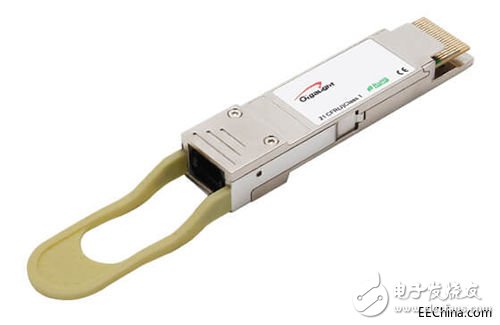Optical transceiver module as an important part of the optical communications transmission, which consists of optoelectronic devices, functional circuits and optical interfaces, etc., optoelectronic devices including transmission and reception of two parts, play a role in photoelectric conversion. However, with the rapid development of the optical communication market, various optical transceiver modules have been born and sold at various speeds. Numerous packages and speeds are dazzling, and in this article, Yifeiyang Communications will explain the encapsulation, speed, characteristics, and classification of optical transceiver modules.
Optical transceiver modules are widely used in wide area networks (WANs), metropolitan area networks (MANs), and local area networks (LANs). With the increasing number of types of optical transceivers, the requirements are getting higher and higher, and the complexity is also amazing. The development, then, what are the characteristics of the development of optical transceiver module?

1: miniaturization
The optical transceiver module, as the core device of the optical fiber access network, promotes the development of the trunk optical transmission system to low cost, making the configuration of the optical network more complete and reasonable. The competition in the current optical communication market is becoming increasingly fierce, the volume required for communication devices is getting smaller and smaller, and the interface density contained in the interface board is getting higher and higher. The separation of conventional lasers from detectors has made it difficult to adapt to modern communications equipment. In order to meet the requirements of optical devices for communication devices, optical modules are developing toward highly integrated small packages. The highly integrated optoelectronic module allows users to deal with high-speed analog optoelectronic signals, shorten the R&D and production cycle, reduce the procurement of vital components, and reduce production costs. Therefore, it is increasingly favored by equipment manufacturers.
2: Low cost, low power consumption
The volume of communication equipment is getting smaller and smaller, and the interface density contained in the interface board is getting higher and higher, which requires the optoelectronic device to develop in the direction of low cost and low power consumption. At present, optical devices generally adopt hybrid integration process and hermetic encapsulation process. The next step in development will be non-hermetic encapsulation, relying on technologies such as passive optical coupling (non-XYZ direction adjustment) and other technologies to further increase the level of automated production and reduce costs.
High ratePeople have more and more requirements on the amount of information, and the rate of information transmission is increasing. The optical communication network, which is the main pillar of modern information exchange, processing and transmission, has been continuously developing to UHF, ultra-high speed, and large capacity. The higher the rate and the greater the capacity, the lower the cost of transmitting each information.
DistanceAnother development direction of optical transceiver modules is long distance. Today's optical networks are farther and farther away, requiring remote transceivers to match. A typical remote transceiver signal can transmit at least 100 kilometers without amplification, the purpose of which is mainly to save expensive optical amplifiers and reduce the cost of optical communications. Based on transmission distance considerations, many remote transceivers have selected the 1550 band (wavelength range is about 1530 to 1565 nm) as the operating band because the loss of light waves is minimal when transmitting in this range, and the available optical amplifiers are all working. Band.
Hot swapFuture optical modules must be hot-swappable. That is, the module can be connected to or disconnected from the device. The optical module is hot-swappable. Network administrators can upgrade and expand the system without shutting down the network. Users will not have any effect. Hot pluggability also simplifies overall maintenance work and allows end users to better manage their transceiver modules. At the same time, thanks to this type of heat exchange performance, the module enables network managers to perform overall planning of send and receive costs, link distances, and all network topologies based on network upgrade requirements without having to replace all system boards.

The above is a development direction of the optical transceiver module in the future. Then, what are the encapsulation, interface and speed of the existing optical transceiver module?
A: optical transceiver module package1. The XFP optical transceiver module (10 Gigabit Small Form Factor Pluggable) is a hot-swappable, optical transceiver independent of the communication protocol used for 10G bps Ethernet, SONET/SDH, and Fibre Channel.
2. Small-size pluggable light emitting module (SFP) is currently the most widely used.
3.GigacBiDi series single-fiber bidirectional optical modules use WDM technology to realize a fiber transmission bidirectional information number (point-to-point transmission, especially fiber optic resources are insufficient, requiring one fiber to transmit bidirectional signals). GigacBiDi includes SFP single-fiber bidirectional (BiDi), GBIC single-fiber bidirectional (BiDi), SFP+ single-fiber bidirectional (BiDi), XFP single-fiber bidirectional (BiDi), SFF single-fiber bidirectional (BiDi), and others.
4. RJ45 electrical plug small pluggable module, also known as electrical module or electrical module.
5.SFF is divided into 2x5, 2x10, etc. according to its pin
6. Gigabit Ethernet Interface Converter (GBIC) Module
7. Passive optical network PON (A-PON, G-PON, GE-PON) optical modules
8.40Gbs high speed optical module.
9. SDH transmission module (OC3, OC12, OC48)
10. Storage modules, such as 4G, 8G, etc.
Two: optical transceiver module interfaceAn optical fiber interface is a physical interface used to connect optical fiber cables. There are usually SC, LC, FC, and ST types. Different optical modules have different fiber interfaces. 1 & TImes; 9 and GBIC optical modules usually use SC fiber interfaces, while SFP and XFP packaged optical modules usually use LC fiber interfaces.

The current optical transceiver module speed: 155M, 622M, 1.25G, 2.5G, 4.25G, 10G, 40G, 56G, 100G, 200G and so on.
Gigalight provides customers with one-stop optical network devices and low-cost optical communications products through a proprietary design. It provides a series of optical transceiver modules. For more information, please visit the official website of Yifeiyang Communications (gigalight.com.cn).
Specifications:
Mechanical life: More than 50.000 cycles
Electrical life: More than 100,000 cycles
Environment temperature Range: - 25 degrees ~ 85 degrees
Operating Relative Humidity Range: ≦96% RH, +40°C
Features
WIDE APPLICATION
Widely used for various kinds of electrical products, instrument, car, boat, household appliances such as lights, water dispenser, treadmill, coffee pot, speaker, electric car, motorcycle, TV, massage machine etc.
EASY TO INSTALL AND USE
2 PIN on-off Rocker Switch with SPST design, simple installation, freely turn on or off the load which you want to control.
HIGH OPERATING LIFE
Made of high quality polyamide eP(Nylon PA66) material, this sturdy mini boat rocker switch is born for anti-corrosion,anti-acid and high resistant with silver terminals.100,000 times of ON/OFF operating life span.
Small Rocker Switch,Micro Rocker Switch,Single Pole Rocker Switch,Single Rocker Switch
Ningbo Jialin Electronics Co.,Ltd , https://www.donghai-switch.com